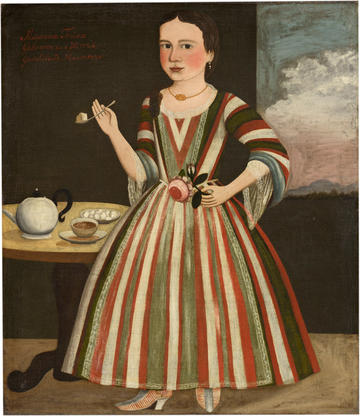We speak with Mimi Goodall, recipient of the Walter Scott & Partners 4th year doctoral studentship 2020-21, about her research, influences and life beyond academia.
What is your academic background and how did this lead you to an interest in the global history of capitalism?
I came to history, though perhaps not to capitalism, by quite a circuitous route. I did a BA in English Literature and moved to history (with a bit of history of art) as a postgraduate at Cambridge and Princeton. I then worked at Sotheby’s before starting on my DPhil. During this period, I was also a research assistant for Professor Jane Humphries, which meant rifling through lots of historical economic documents in various archives. I still use some of them as sources today.
Even though I’ve worked in a lot of different disciplines, I’ve always been interested in the importance of money and capital. As a literature student, I was fascinated by how much books cost, or how much an author was paid, how money affected literacy levels... When I was working in the art world, I spent a lot of time thinking about the ways in which huge amounts of capital were bound up with creative production both today and in the past.
Writing about sugar has allowed me to explore the history of trading systems and the accumulation of capital in more depth. Because this work is linked inextricably to slavery, I’ve also become much more interested in the intersection of capital and power, and how the pursuit of capital exacerbates inequality.

Gansevoort Limner, Portrait of Susanna Truax, c.1730, National Gallery of Art, Washington D.C.
Tell us a bit more about your current research and what aspect of this you would like to develop into a GHoC case study?
My DPhil thesis, Sugar in the Early British Atlantic, explores how people bought and ate sugar in the seventeenth and early eighteenth centuries. Drawing on new archival sources and blending quantitative and qualitative analysis, I revise the chronology of the sugar trade, arguing that it was far more extensive and developed by 1700 than has been recognized by historians to date. This new story of sugar reframes the history of international economic systems, early forms of capitalist exchange, burgeoning industrialization, and above all, the reliance of the metropolitan economic environment on exploitation in the colonies.
I’m excited to put together a case study which looks at one aspect of this – it might be thinking about the transformation of luxury goods, development of long-distance trade, the importance of diet and consumer choice… Any of these!
What have been your biggest influences in relation to your research? Do you have any recommendations for books, articles, media related to this area?
The 1619 project from the New York Times was foundational to the way that I began to think about how slavery and capitalism are intertwined. There’s an amazing article on the importance of sugar by Khalil Gibran Muhammad.
I also am fascinated by the work of Kara Walker, an American installation artist. In 2014, she built a huge sugar sculpture in a disused sugar refinery in Brooklyn. A Subtlety emphasized the labour of enslaved people who worked on sugar plantations and their contribution to the global economy. I recommend Hilton Als’ review of it in The New Yorker.
What do you like doing when you’re not buried in your research!?
I’m a keen runner and cyclist, though my competitive spirit has been slightly subdued by Covid sporting restrictions. I can also be found swimming at Port Meadow during most of the (warmer) months of the year.
Read more about Mimi's research in her article in The Conversation.